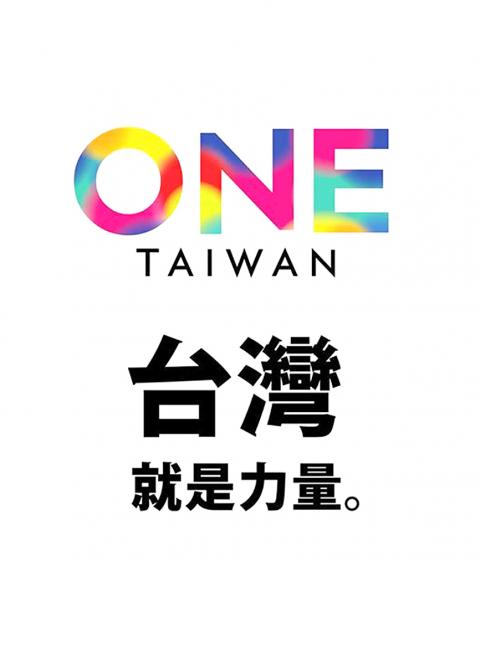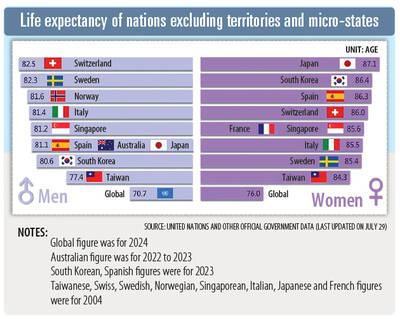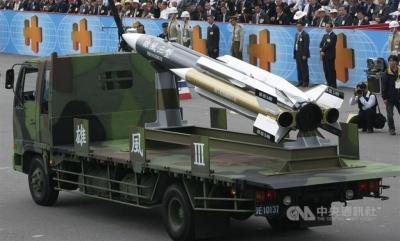Chinese Nationalist Party (KMT) presidential candidate Eric Chu’s (朱立倫) latest campaign slogan unveiled yesterday has triggered a heated online discussion on its underlying messages, as well as bringing accusations of plagiarism.
Early yesterday, Chu posted on Facebook a photograph showing a billboard in Taipei’s downtown area with the slogan “One Taiwan.”
“Past campaigns were usually a process of prolonged bickering ... but after staring at a few key words — solidarity, action and strength — which I selected from a long list, I have come to a realization about the predicaments Taiwan has experienced over the years,” Chu wrote on Facebook.

Photo: Screen grab from Facebook
Chu said he realized that people generally tend to spend more time arguing over problems than trying to tackle them, which has led to the nation’s stagnant economy and “social chaos.”
Addressing Taiwan’s problems requires unity, mutual tolerance and comprehension, Chu said.
“We must jointly march forward into the future with a multicolored, diversified, and united ‘one Taiwan,’” he said.
Some netizens were quick to fill in the blank for Chu’s campaign slogan, saying his “One Taiwan” insinuates Taiwanese independence and stands for “one Taiwan, one China.”
“It is brave of Chu to imply there is ‘one Taiwan, one China’ in his campaign slogan, but why not just say the whole thing?” Taipei City Government policy adviser Hung Chih-kun (洪智坤) said.
Others accused Chu of using the name of Taiwan to solicit votes.
“Chu is saying ‘one Taiwan’ but thinking about ‘one China,’” said a Facebook user who identified himself as Wang Chih Kang. “The 2.0 version [of President Ma Ying-jeou (馬英九)] must be thinking how gullible Taiwanese are.”
Another netizen, named Cheng Sheng-chuan (鄭勝全), compared the KMT to a schizophrenic person who thinks about “one China” on ordinary days, but automatically shifts their stance to “One Taiwan” during campaign season.
Several netizens accused Chu of plagiarism, saying there is a striking resemblance between the design for his “One Taiwan” poster and that for Democratic Progressive Party (DPP) presidential candidate Tsai Ing-wen’s (蔡英文) campaign advert “Light Up Taiwan.”
Both Tsai’s and Chu’s campaign advertisements are against a white backdrop and use a similar calligraphic style for the word “Taiwan.”
The DPP advert features a hollow circle in various shades of green, while the letter “O” in Chu’s billboard is rainbow-colored.
“Does it mean Chu agrees with Tsai’s principles and values? He should at least put the name and emblem of his party on the billboard, otherwise people might mistake it for one of Tsai’s campaign ads,” a Facebook user named Liu Che-wei (劉哲瑋) wrote.
Chu said that his “One Taiwan” idea means bringing everyone together regardless of where they are from, their social status or wealth.
“That is the primary mission of a head of state,” he said.

STATS: Taiwan’s average life expectancy of 80.77 years was lower than that of Japan, Singapore and South Korea, but higher than in China, Malaysia and Indonesia Taiwan’s average life expectancy last year increased to 80.77 years, but was still not back to its pre-COVID-19 pandemic peak of 81.32 years in 2020, the Ministry of the Interior said yesterday. The average life expectancy last year increased the 0.54 years from 2023, the ministry said in a statement. For men and women, the average life expectancy last year was 77.42 years and 84.30 years respectively, up 0.48 years and 0.56 years from the previous year. Taiwan’s average life expectancy peaked at 81.32 years in 2020, as the nation was relatively unaffected by the pandemic that year. The metric

Taiwan High Speed Rail Corp. (THSRC) plans to ease strained capacity during peak hours by introducing new fare rules restricting passengers traveling without reserved seats in 2026, company Chairman Shih Che (史哲) said Wednesday. THSRC needs to tackle its capacity issue because there have been several occasions where passengers holding tickets with reserved seats did not make it onto their train in stations packed with individuals traveling without a reserved seat, Shih told reporters in a joint interview in Taipei. Non-reserved seats allow travelers maximum flexibility, but it has led to issues relating to quality of service and safety concerns, especially during

A magnitude 5.1 earthquake struck Chiayi County at 4:37pm today, the Central Weather Administration (CWA) said. The hypocenter was 36.3km southeast of Chiayi County Hall at a depth of 10.4km, CWA data showed. There were no immediate reports of damage resulting from the quake. The intensity of the quake, which gauges the actual effect of a seismic event, measured 4 in Chiayi County, Tainan and Kaohsiung on Taiwan's seven-tier intensity scale, the data showed. The quake had an intensity of 3 in Chiayi City and Yunlin County, while it was measured as 2 in Pingtung, Taitung, Hualien, Changhua, Nantou and Penghu counties, the data

The Supreme Court today rejected an appeal filed by former Air Force officer Shih Chun-cheng (史濬程), convicted of Chinese Communist Party (CCP) espionage, finalizing his sentence at two years and two months for contravening the National Security Act (國家安全法). His other ruling, a ten-month sentence for an additional contravention, was meanwhile overturned and sent to the Taichung branch of the High Court for retrial, the Supreme Court said today. Prosecutors have been notified as Shih is considered a flight risk. Shih was recruited by Chinese Communist Party (CCP) intelligence officials after his retirement in 2008 and appointed as a supervisor